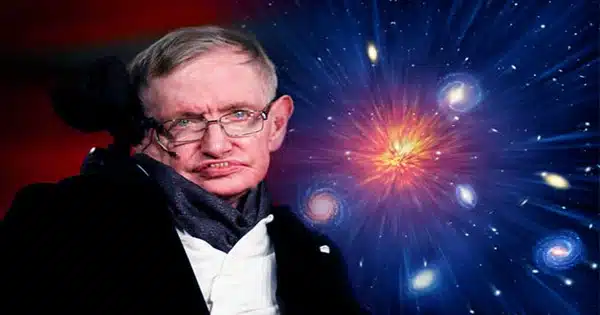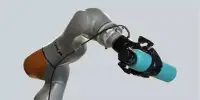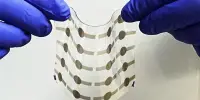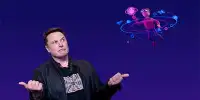When Thomas Hertog was initially summoned to Stephen Hawking’s office in the late 1990s, he felt an instant connection with the famed British theoretical physicist.
“Something clicked between us,” Hertog said.
That bond would persist even after Hawking’s crippling disease, ALS, robbed him of his last means of communication, allowing the two to finish a novel theory that tries to flip the way science looks at the cosmos on its head.
The hypothesis, which would be Hawking’s final before his death in 2018, was published in full for the first time in Hertog’s book “On the Origin of Time” last month in the UK.
The cosmologist discussed their 20-year working relationship with AFP, how they communicated by facial expressions, and why Hawking ultimately realized that his seminal book “A Brief History of Time” was written from the wrong point of view.
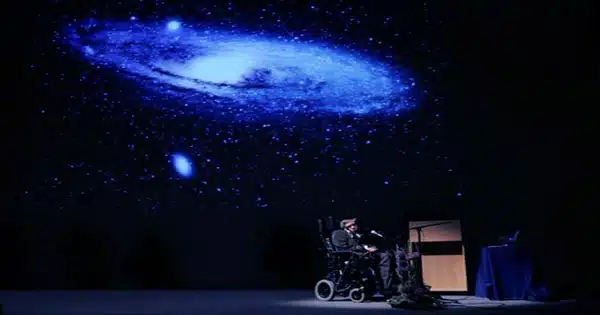
The ‘designed’ universe: Hawking brought up the issue that was bugging him during their first encounter at Cambridge University in 1998.
“The universe we observe appears designed,” Hawking told Hertog through a clicker linked to a voice machine.
Hertog argued that “the laws of physics—the rules on which the universe runs—turn out to be just perfect for the universe to be habitable, for life to be possible.”
This extraordinary run of good fortune extends from the delicate balance that allows atoms to form molecules required for chemistry to the expansion of the universe itself, which allows for massive cosmic structures such as galaxies.
The multiverse, a concept that has recently gained popularity in the film business, has been one “trendy” solution to this issue, according to Hertog.
By reducing the cosmos to one of the countless others, most of which are “crap, lifeless, sterile,” the 47-year-old continued, this hypothesis explains away the universe’s clearly intended nature.
Hertog claimed that Hawking recognized the “great mire of paradoxes the multiverse was leading us into” and claimed a more satisfactory explanation must exist.
Outsider’s perspective: “It began to sink in” a few years into their collaboration that they were missing something basic, Hertog said.
Hertog described the multiverse and “A Brief History of Time” as “attempts to describe the creation and evolution of our universe from what Stephen would call a ‘God’s eye perspective.”
However, because “we are within the universe” and not on the outside looking in, our theories cannot be separated from our perspective, he stressed.
“That’s why (Hawking) said ‘A Brief History of Time’ was written from the wrong perspective.”
For the following 15 years, the couple harnessed quantum theory’s quirks to create a novel theory of physics and cosmology from an “observer’s perspective.”
By 2008, however, Hawking had lost the capacity to operate his clicker and had become progressively isolated from the rest of the world.
“I thought it was all over,” Hertog admitted.
He claims that the couple then acquired a “somewhat magical” degree of nonverbal communication that allowed them to continue working.
Hertog would stand in front of Hawking and ask questions, looking into the physicist’s eyes.
“He had a very wide range of facial expressions, ranging from extreme disagreement to extreme excitement,” he observed.
Hertog claimed that it was “impossible to disentangle” which portions of the final theory originated from him and which ones from Hawking, adding that many of the concepts had been developed over time by the two.
‘One grand evolutionary process’: Their theory focuses on what happened immediately following the Big Bang.
Rather than a pre-existing set of rules governing an explosion, they believe that the laws of physics formed with the universe.
This means that if you go far enough back in time, “the laws of physics themselves begin to simplify and disappear,” according to Hertog.
“Eventually, even the dimension of time vanishes.”
The principles of physics and time itself, according to this idea, evolved in a manner similar to biological evolution—the title of Hertog’s book is a reference to Darwin’s “On the Origin of Species.”
“What we’re essentially saying is that (biology and physics) are two levels of one grand evolutionary process,” Hertog explained.
Because the early years of the cosmos are still “hidden in the midst of the Big Bang,” he recognized that it is challenging to demonstrate this idea.
He said that one method to remove this curtain might be to study gravitational waves, which are ripplings in space-time, and another might be to use quantum holograms created on quantum computers.
